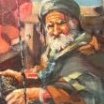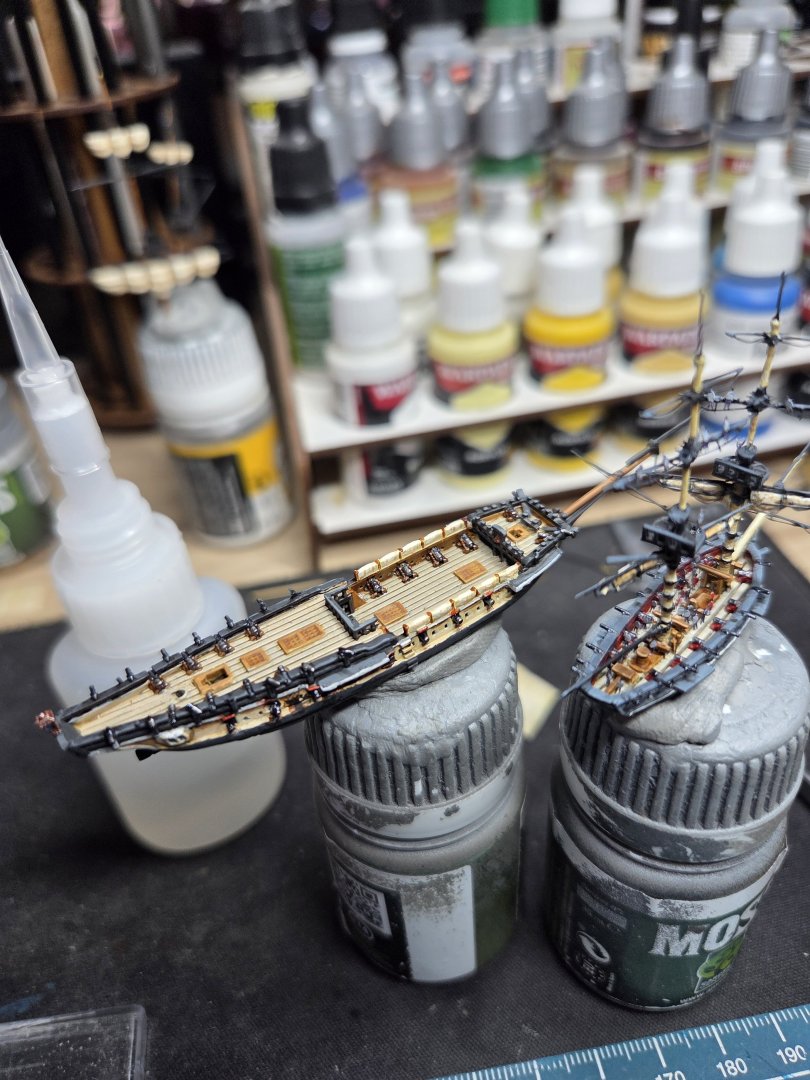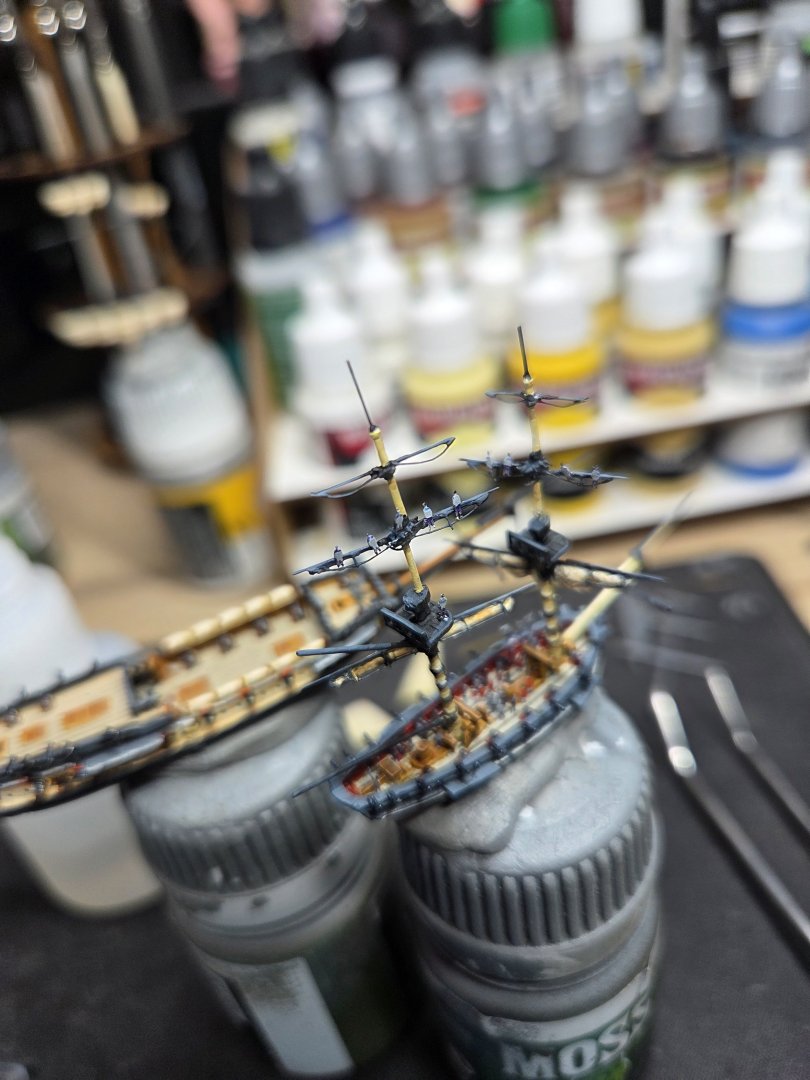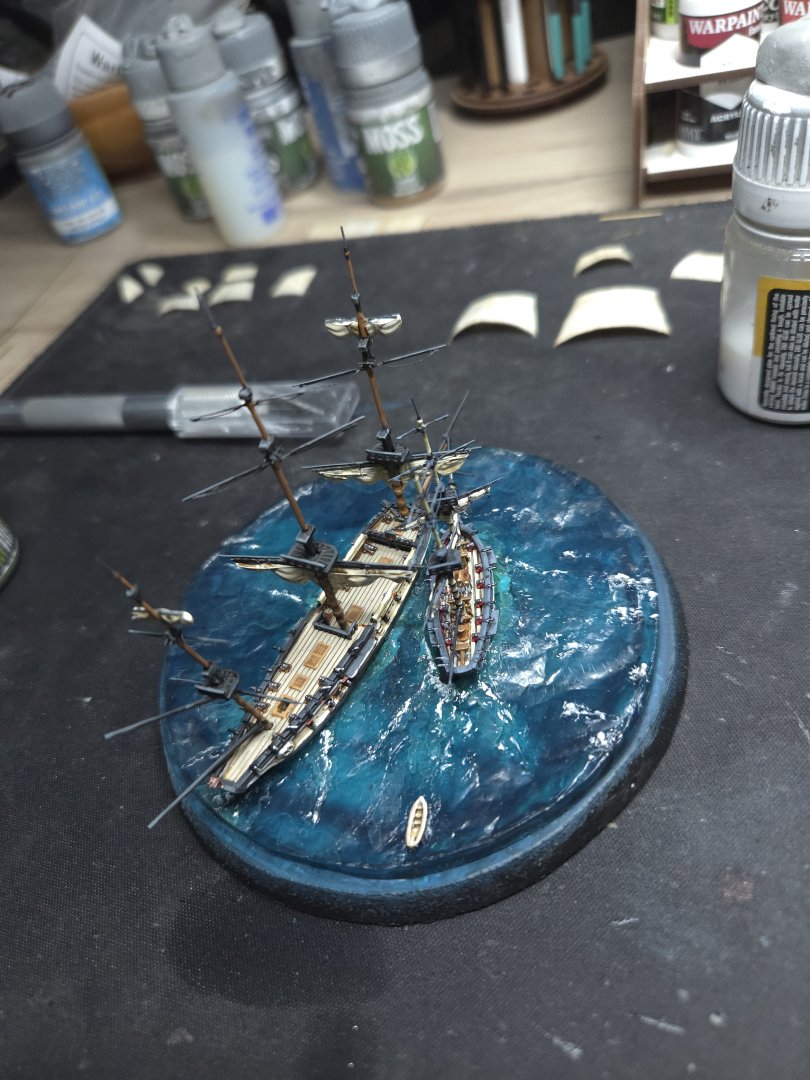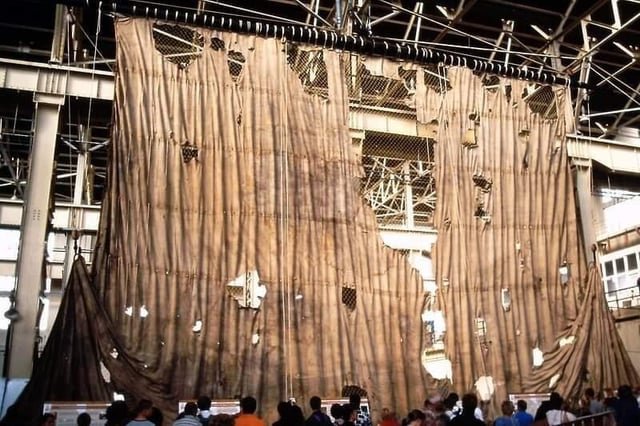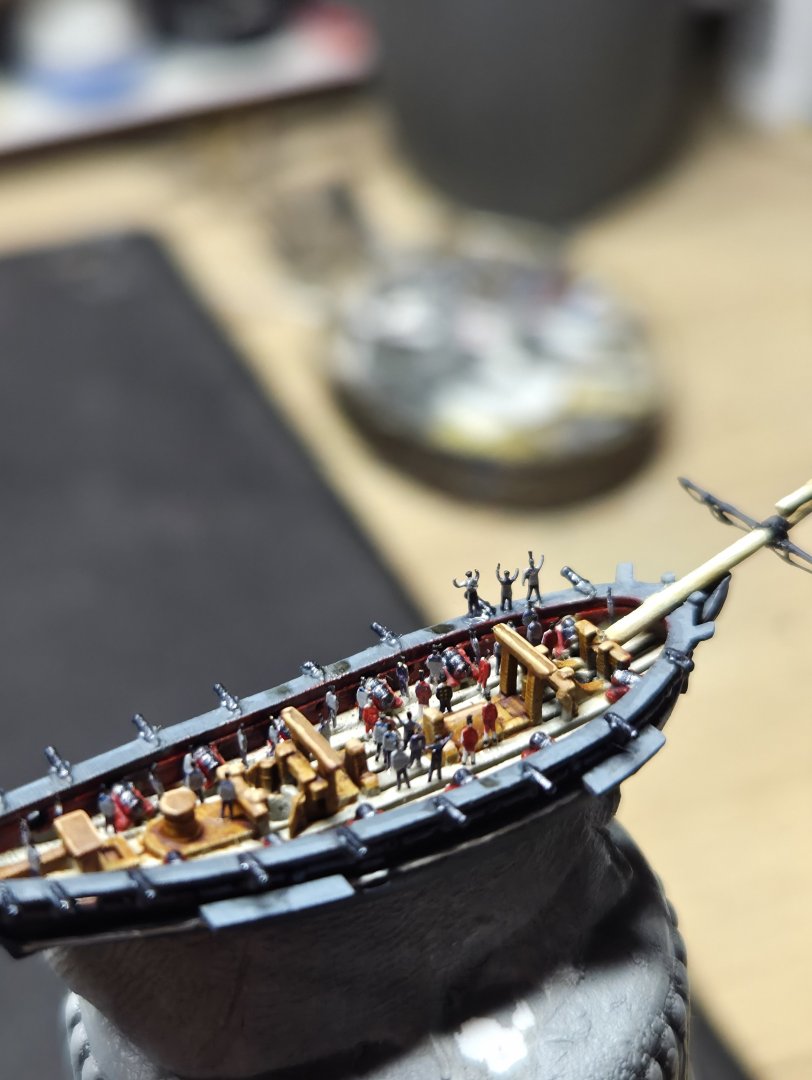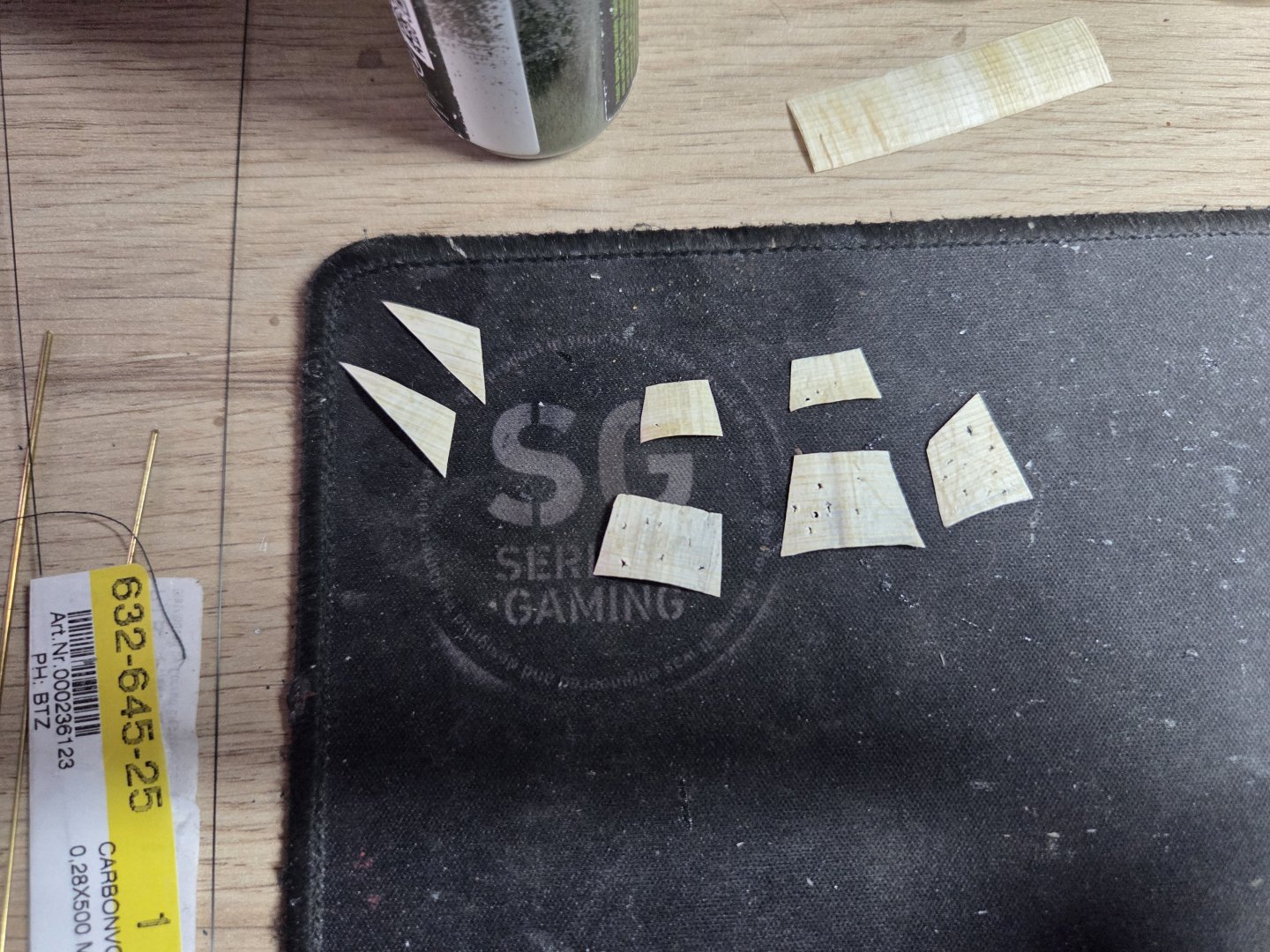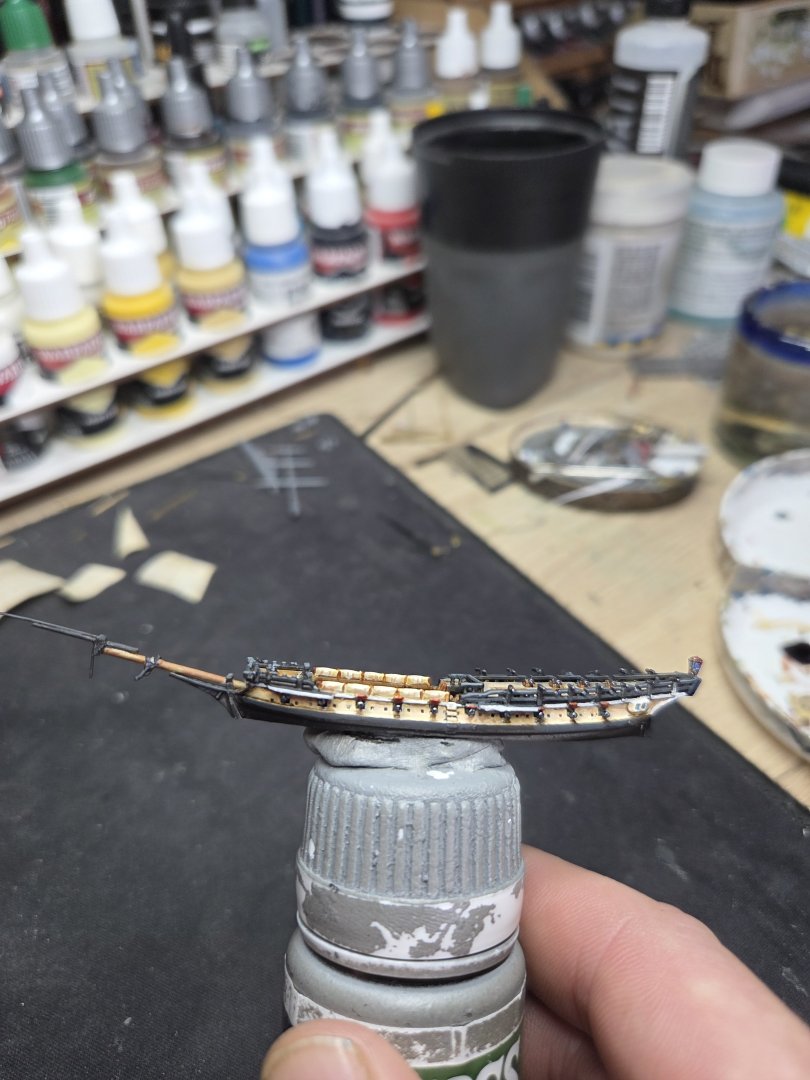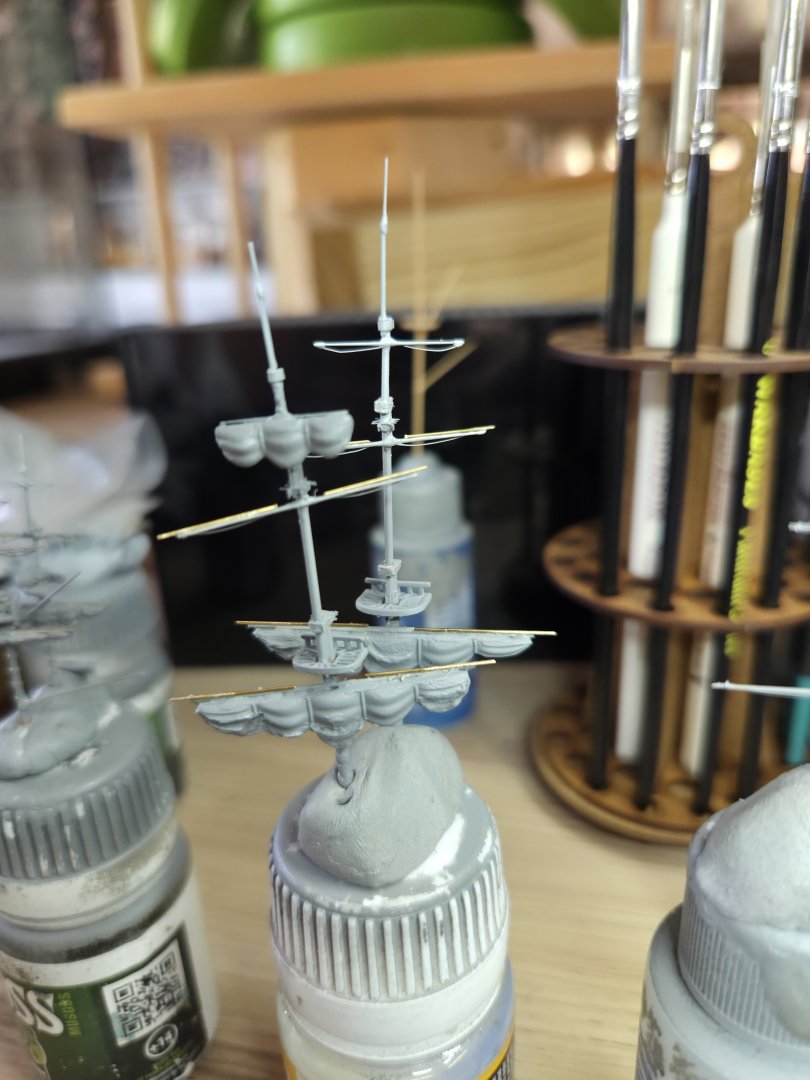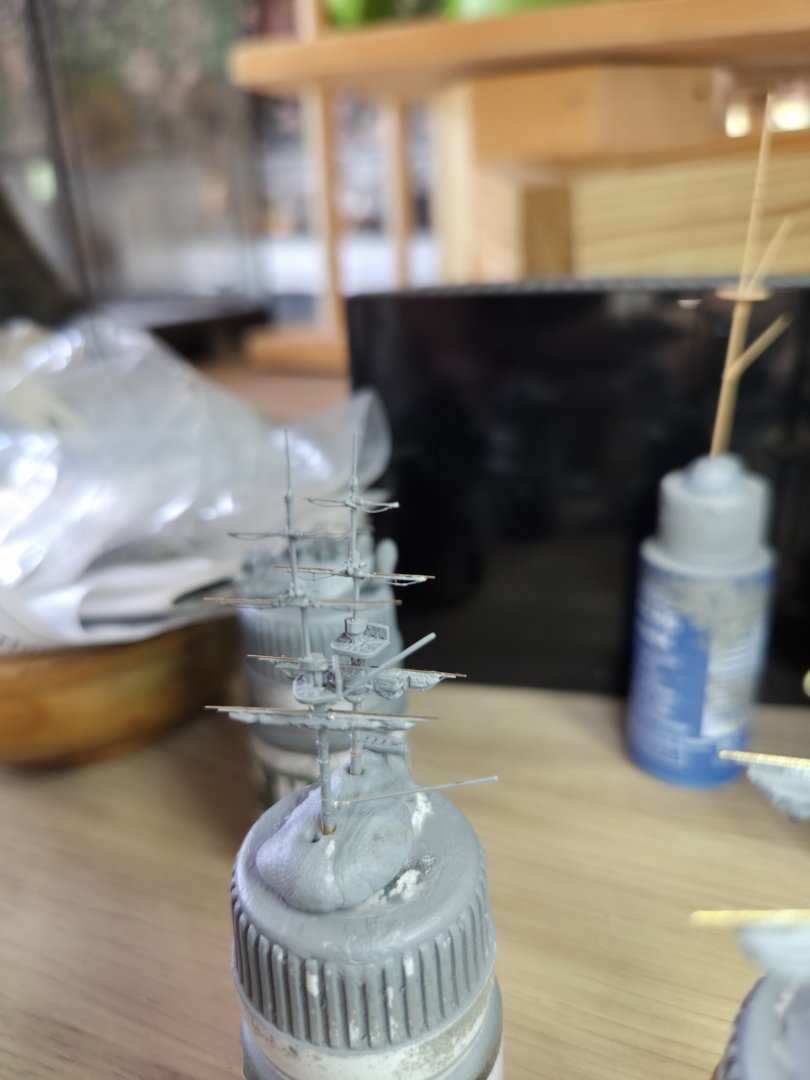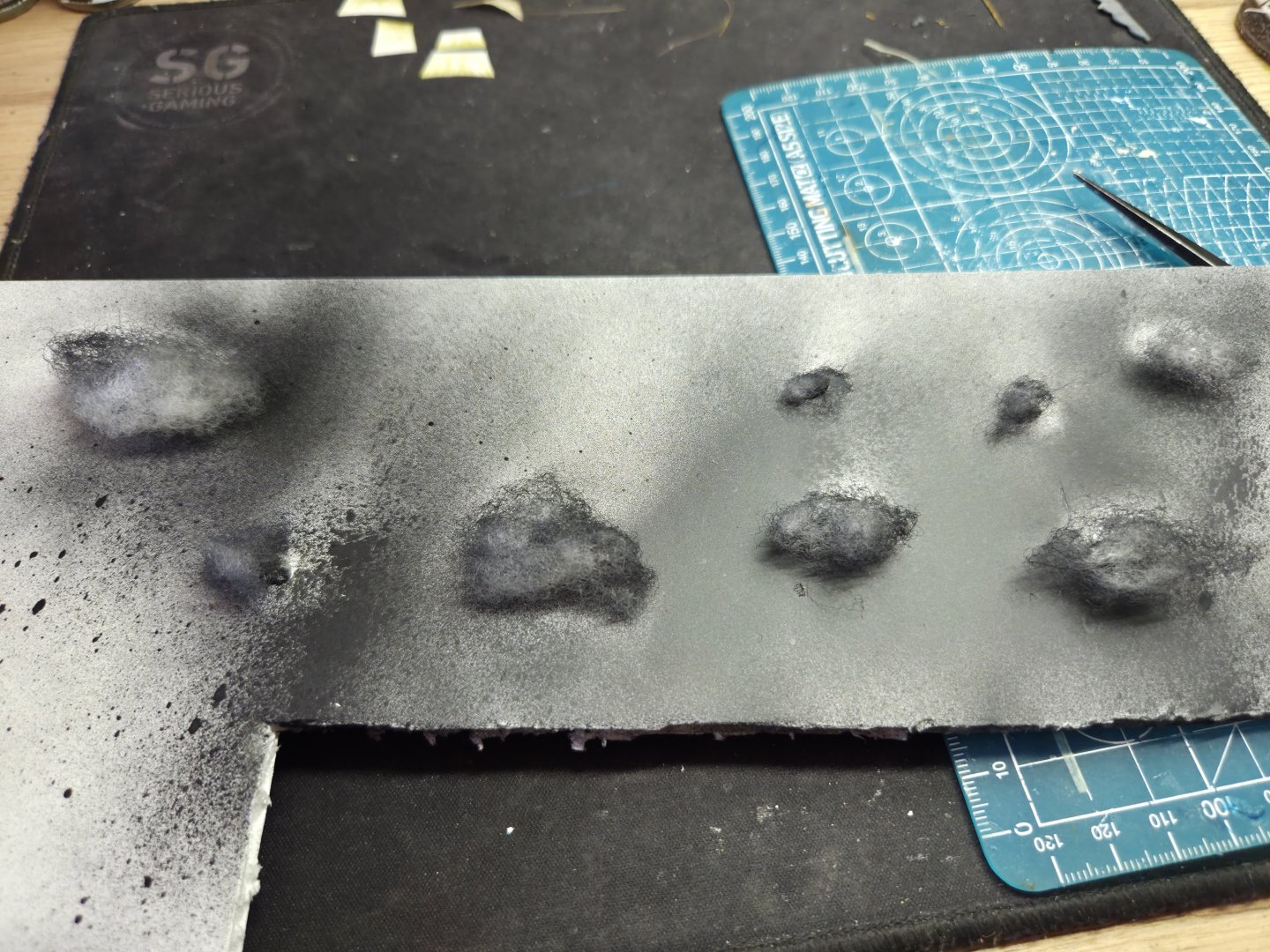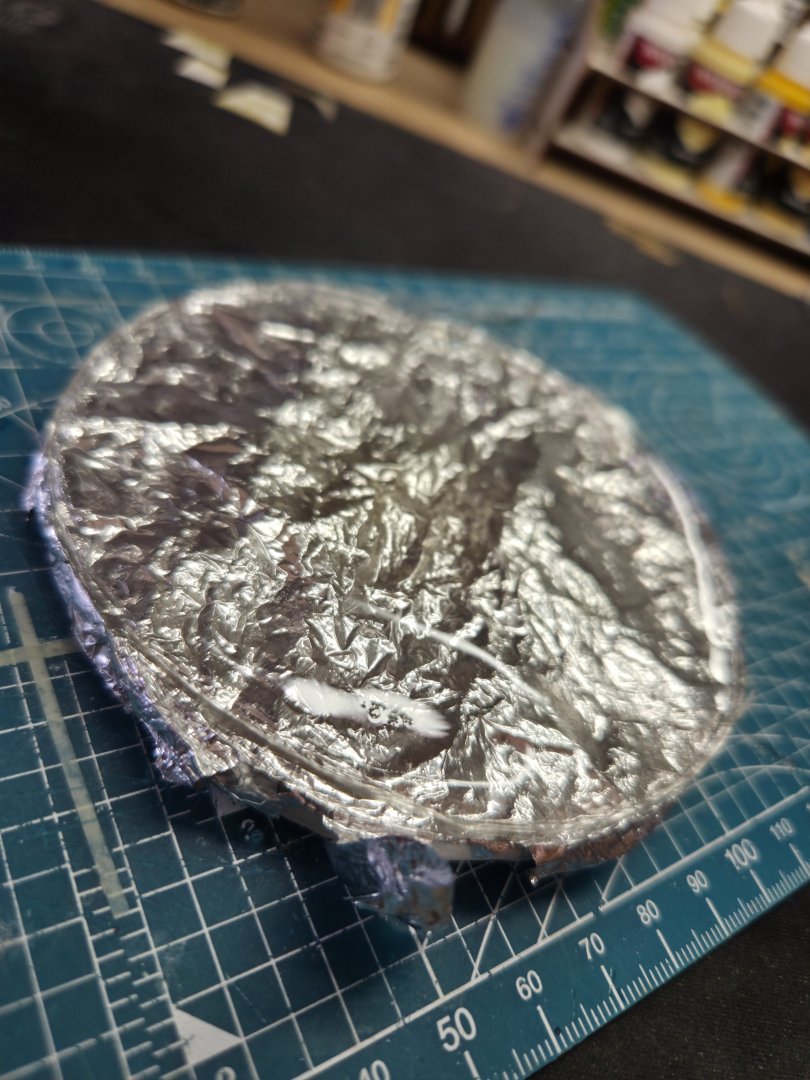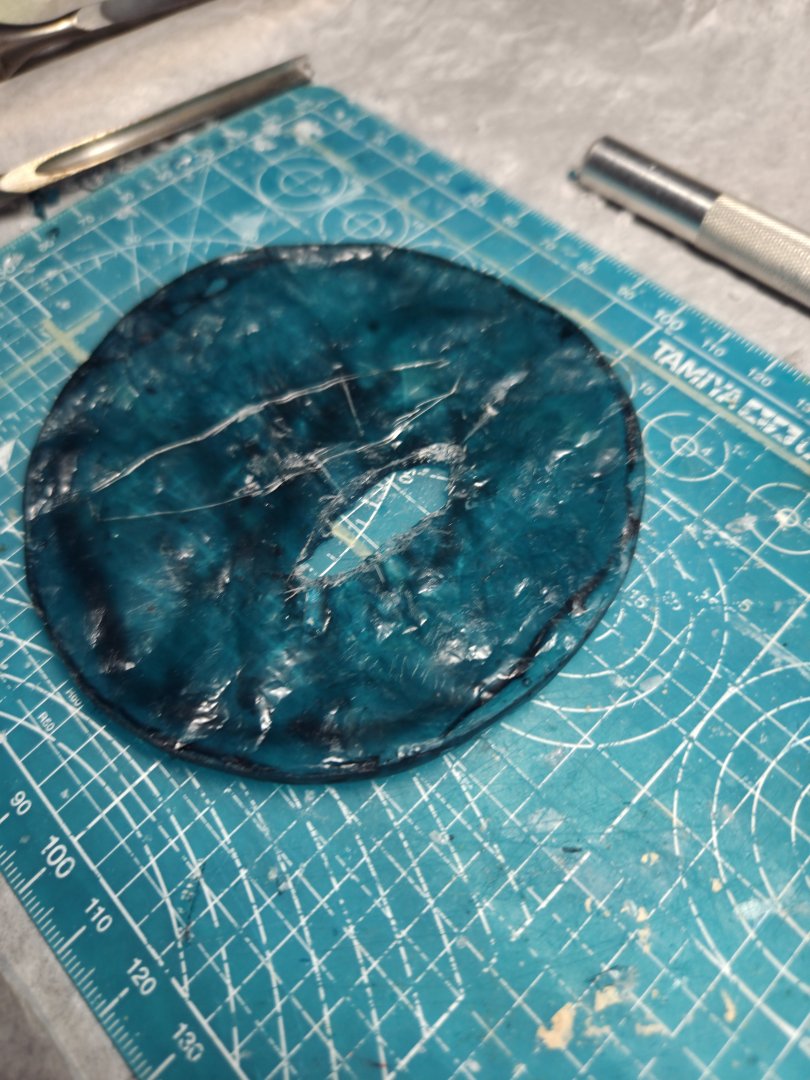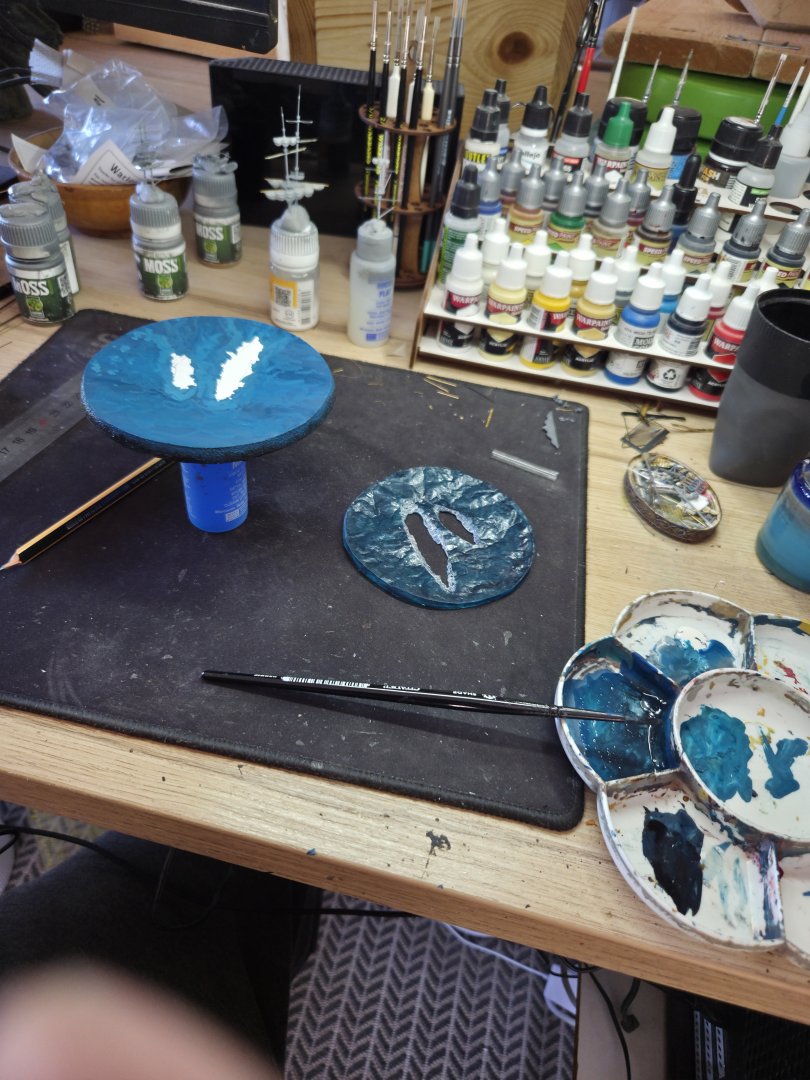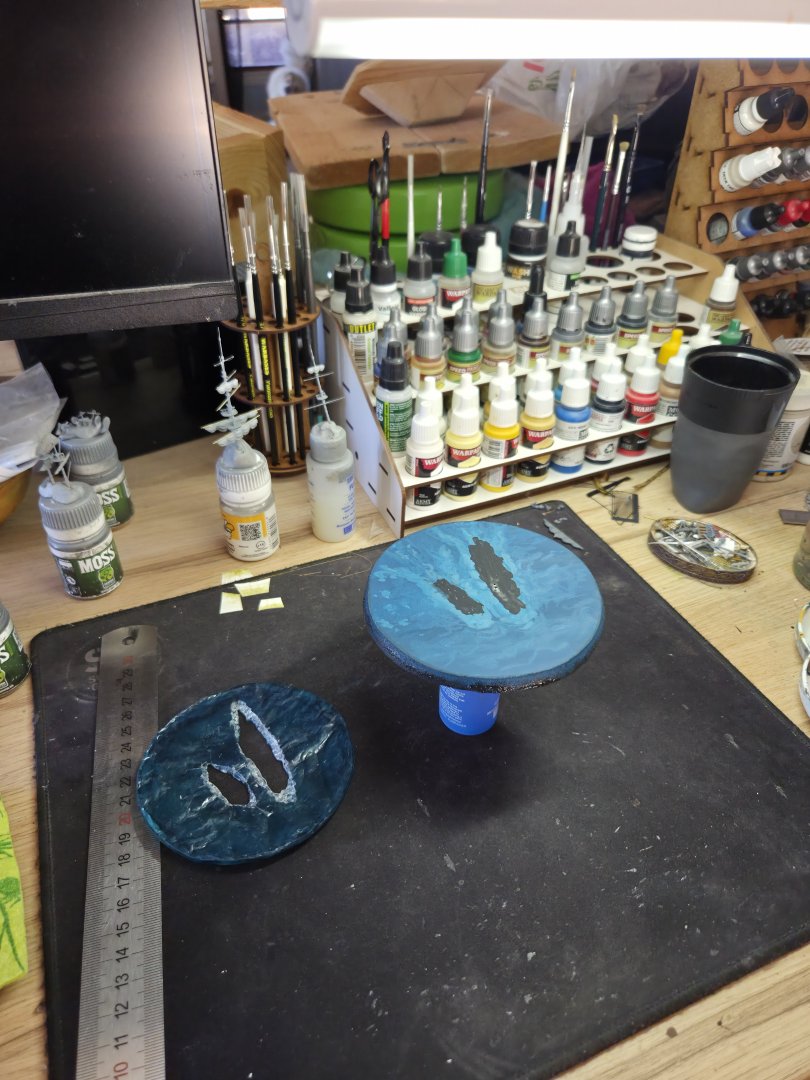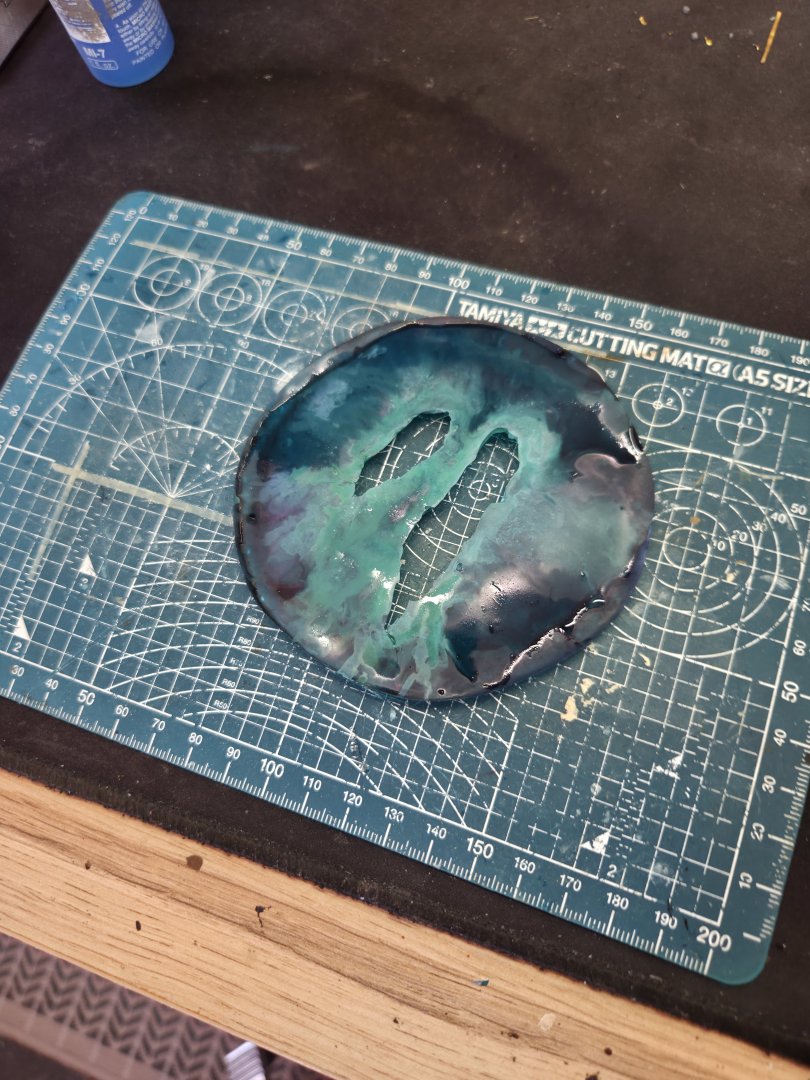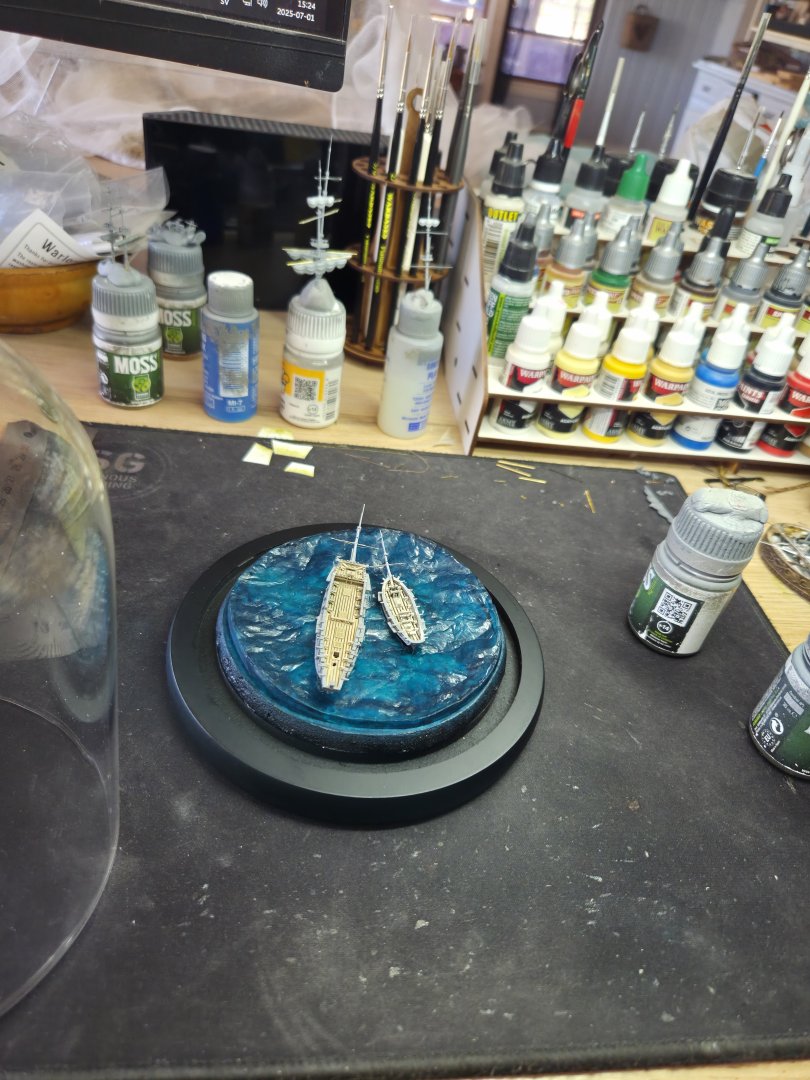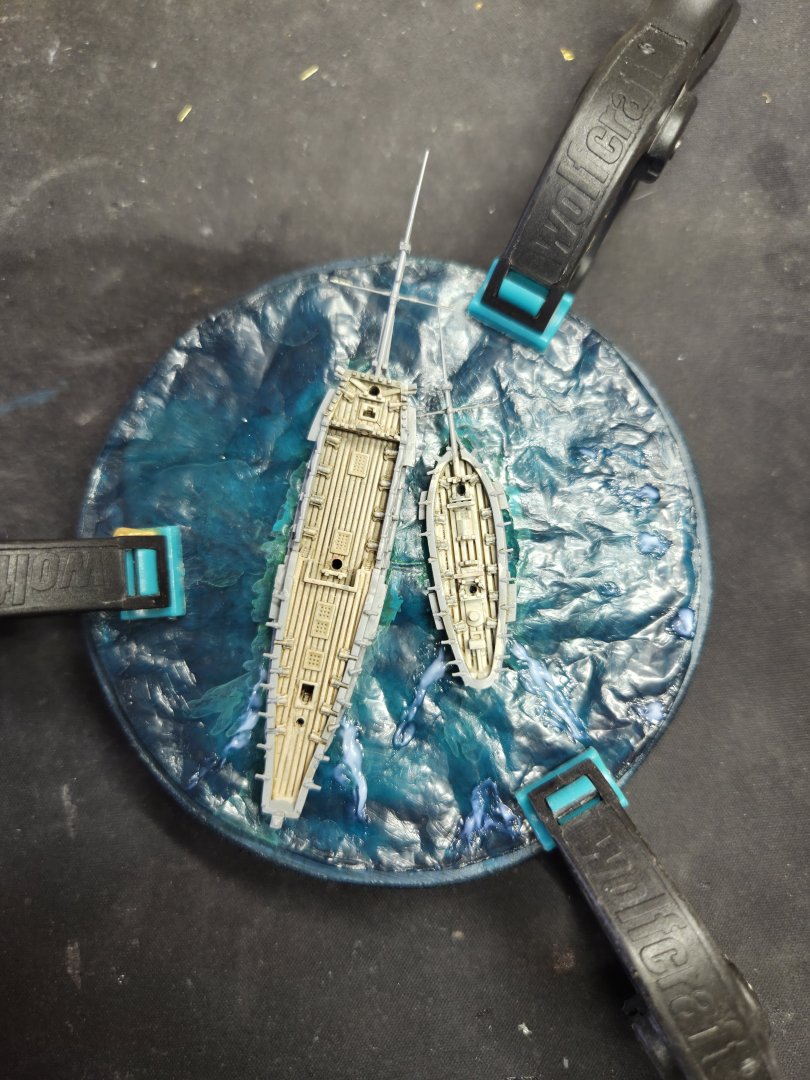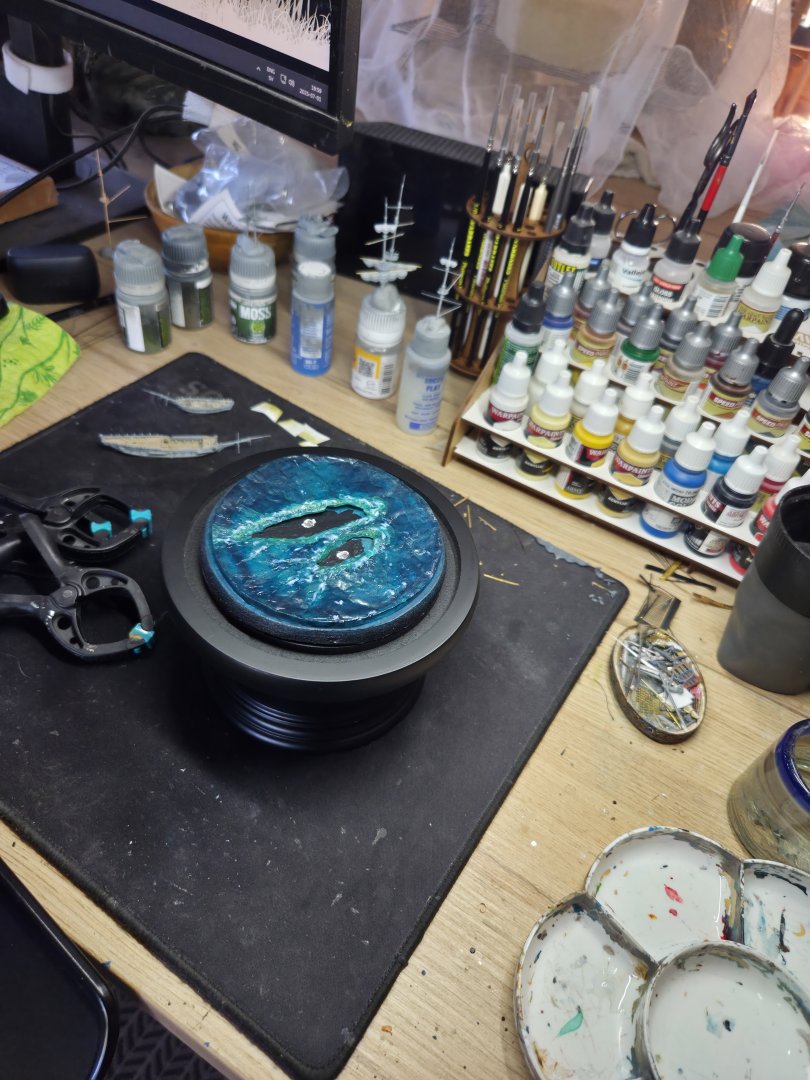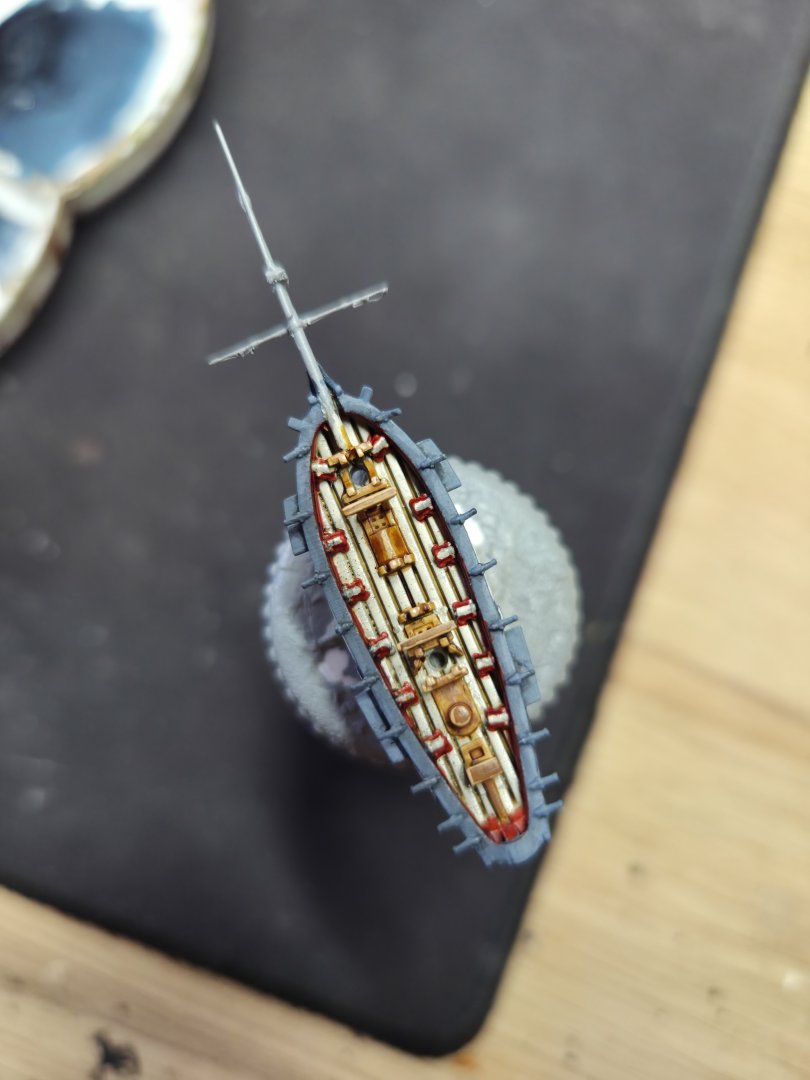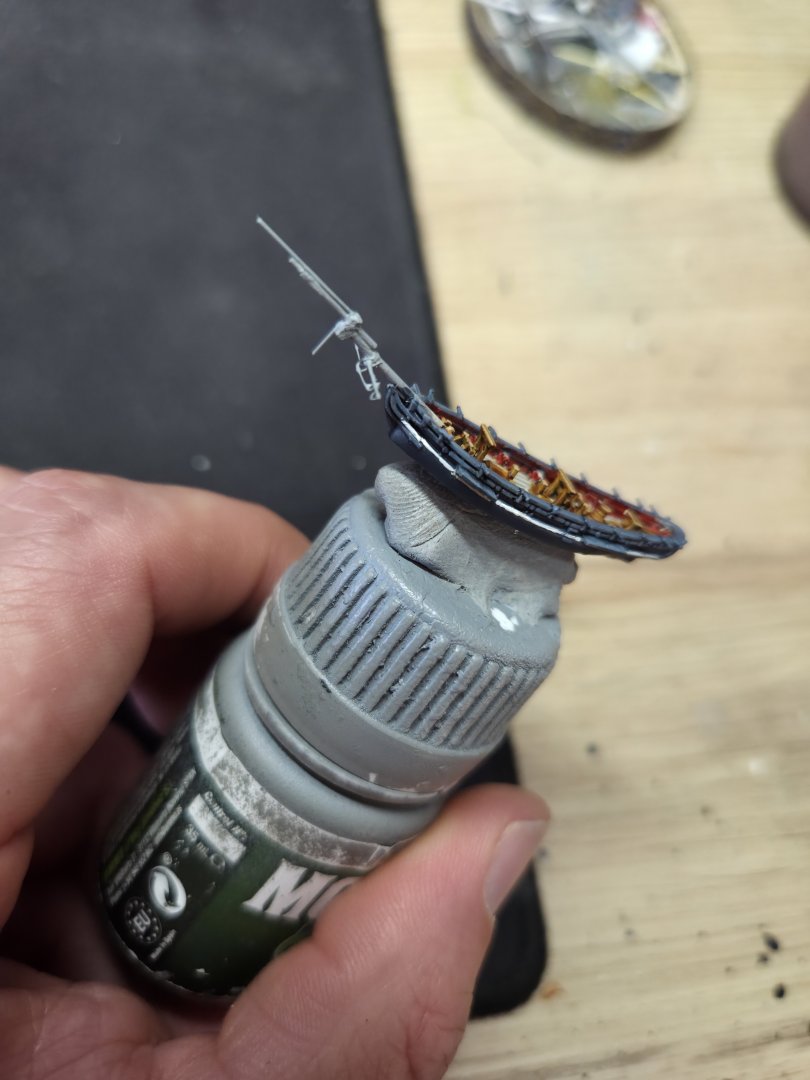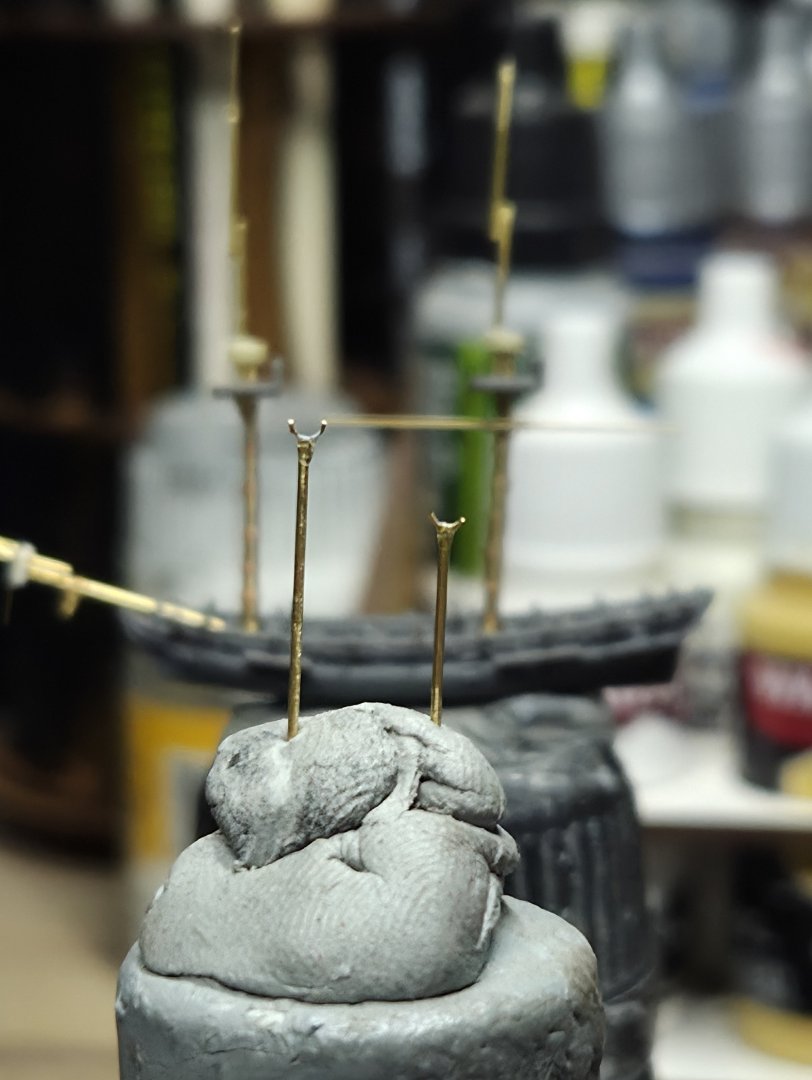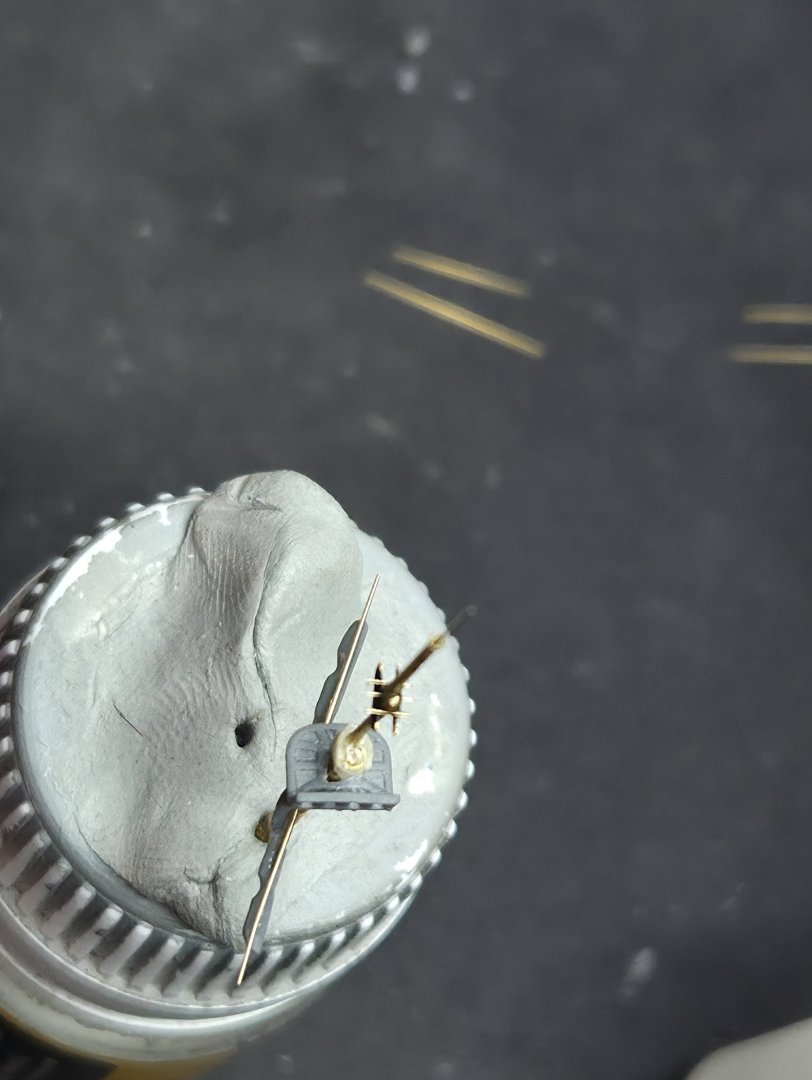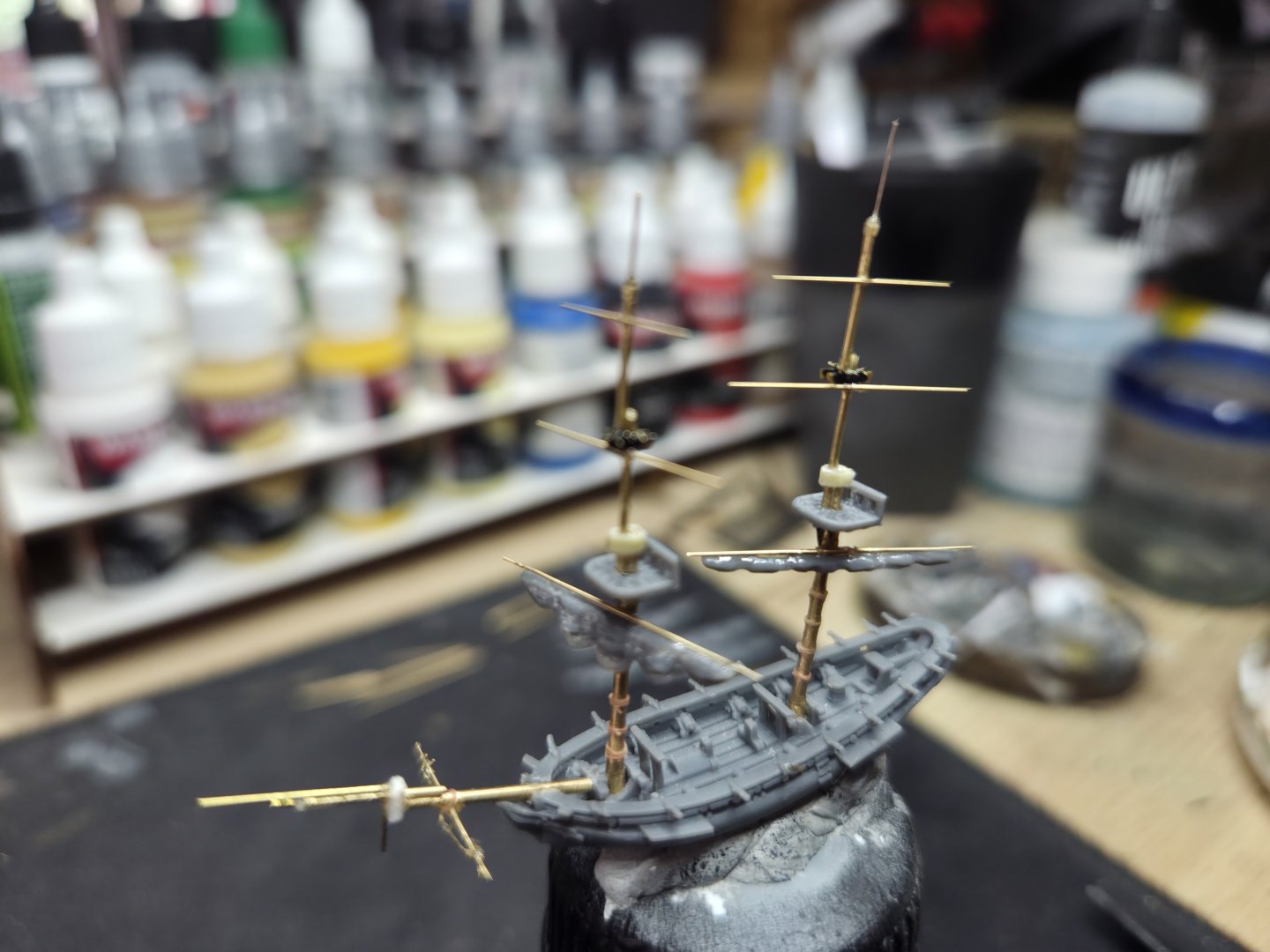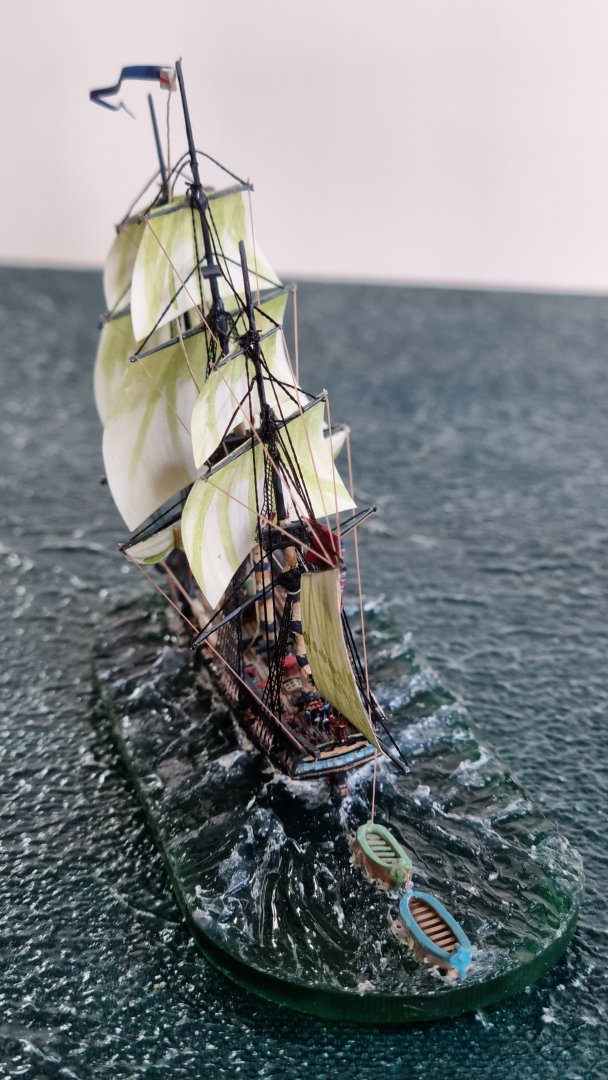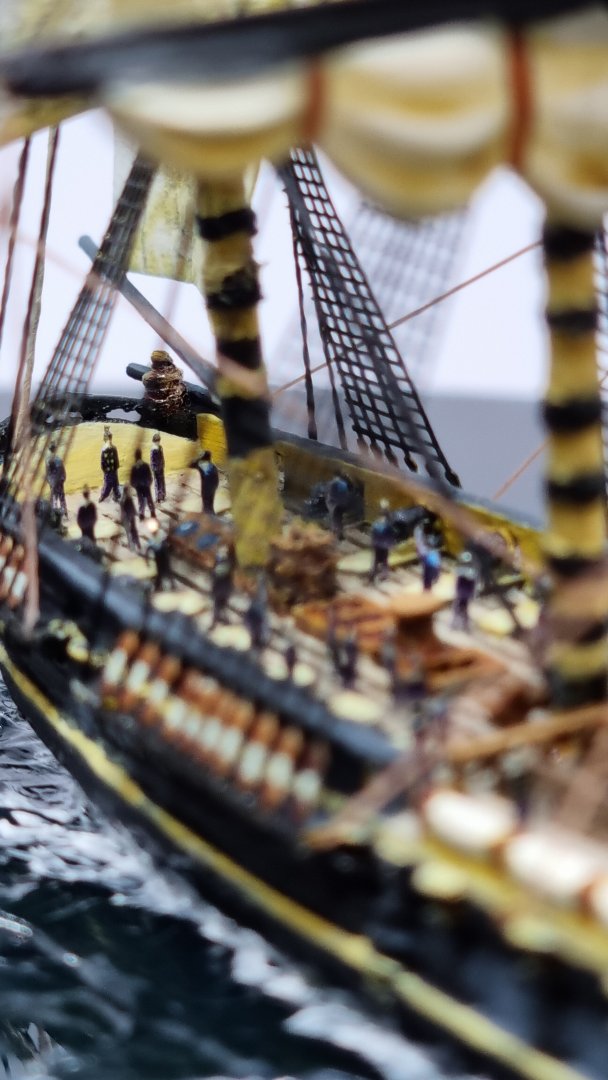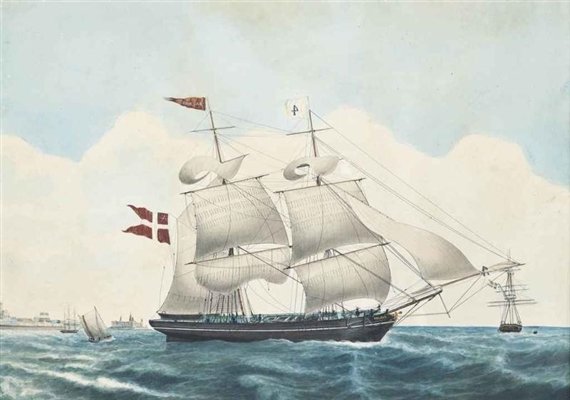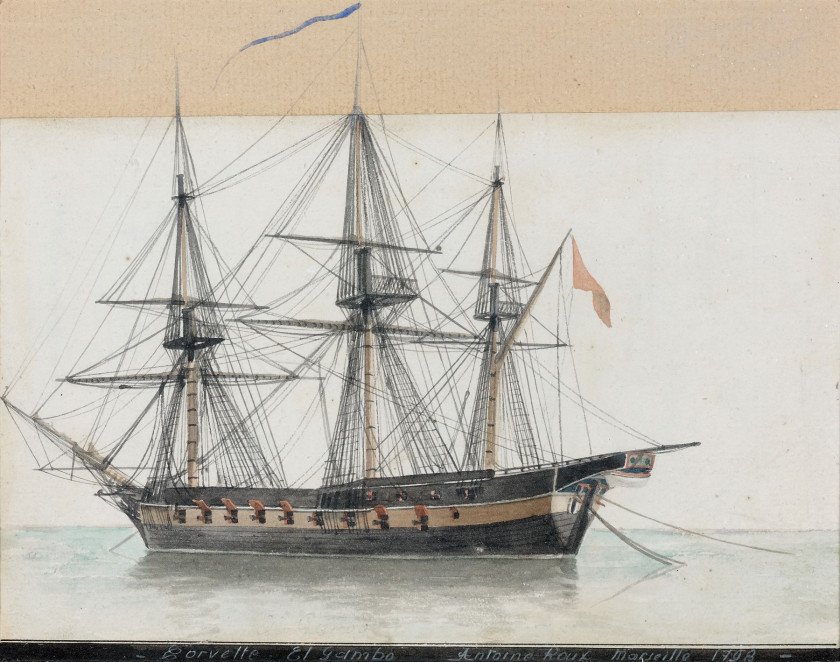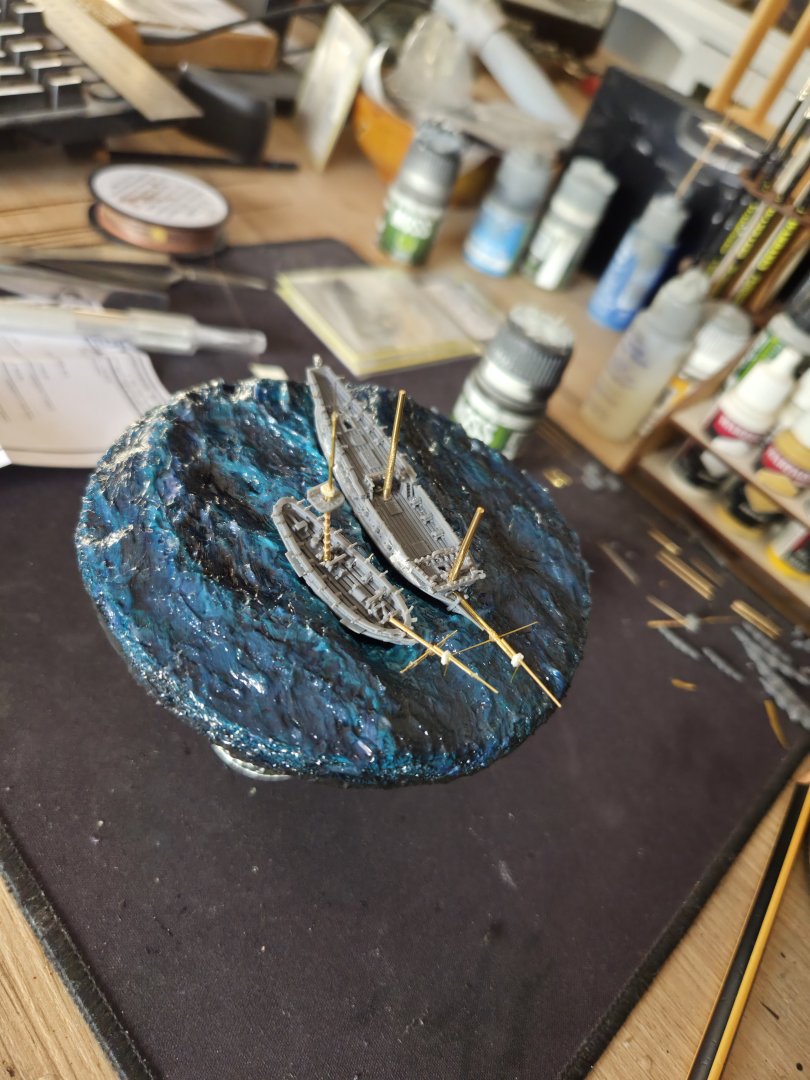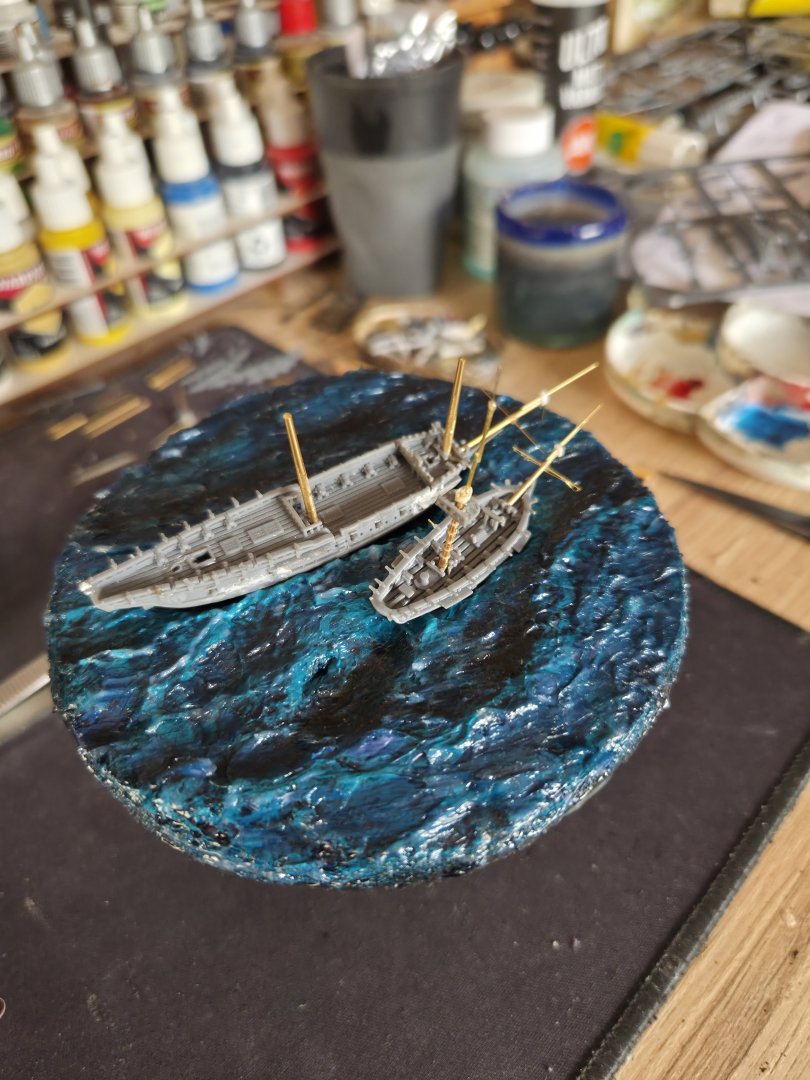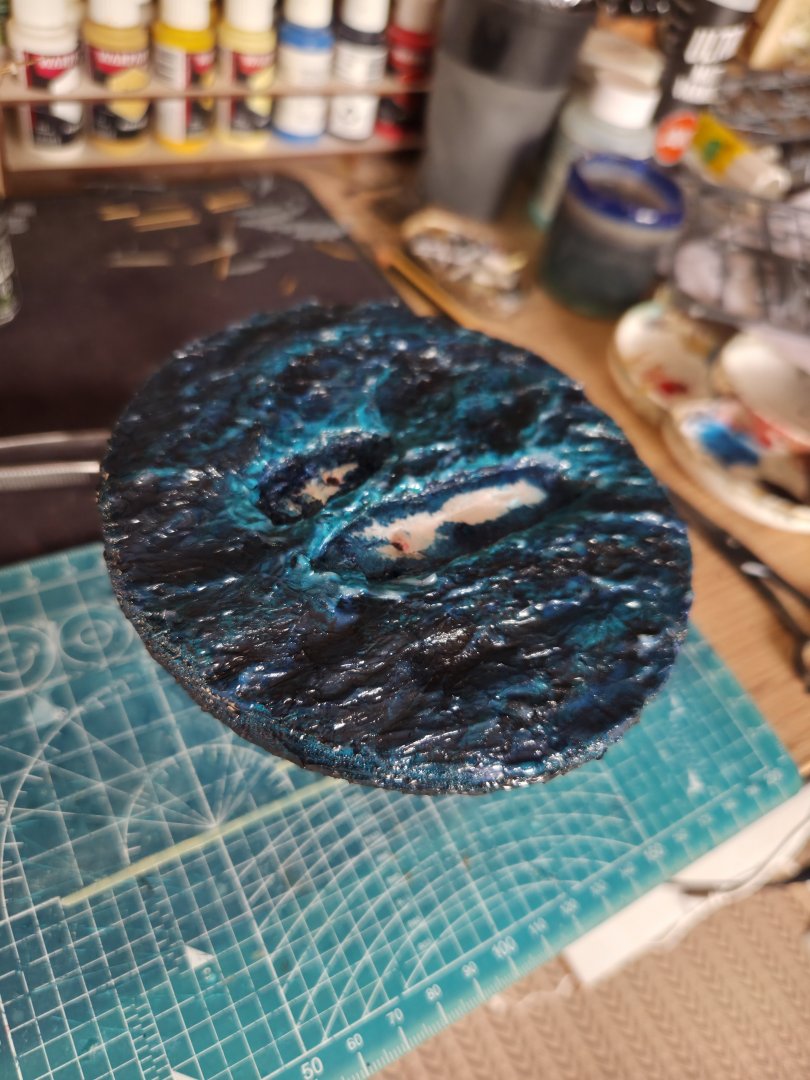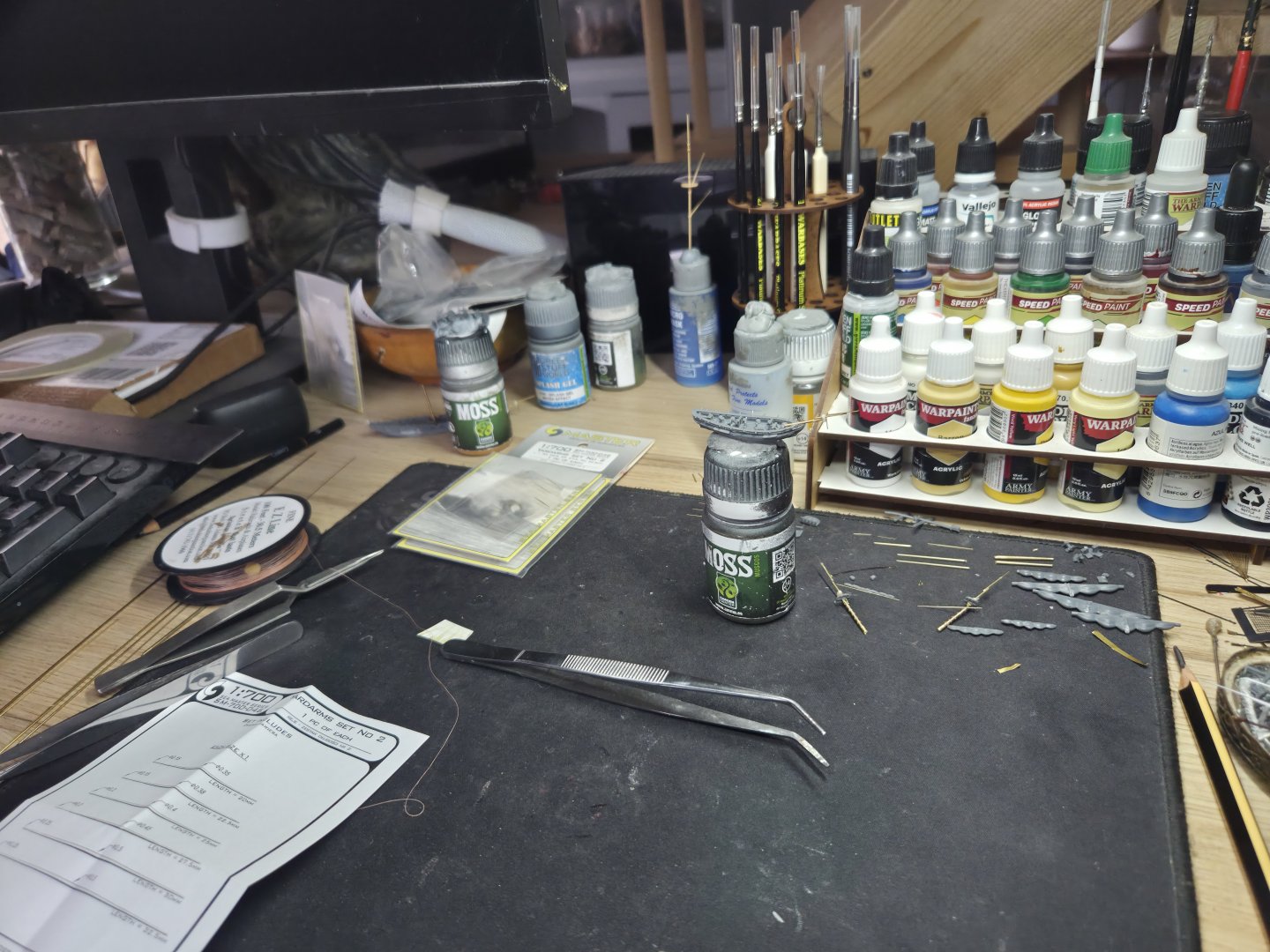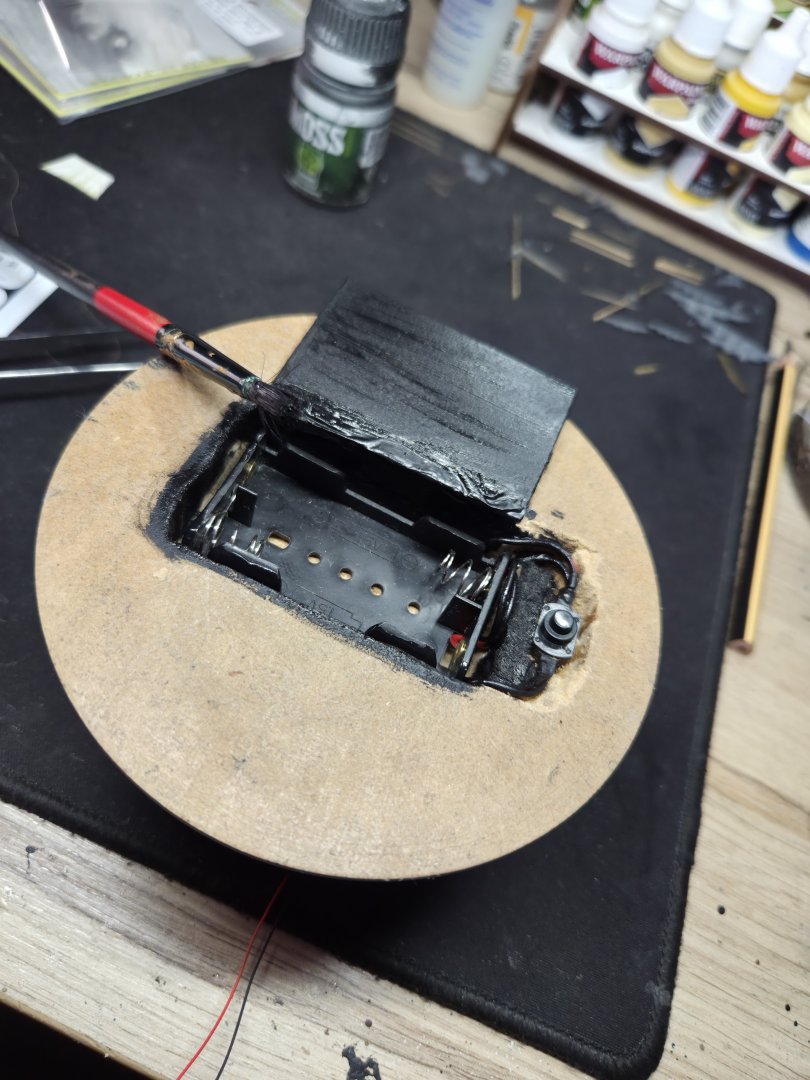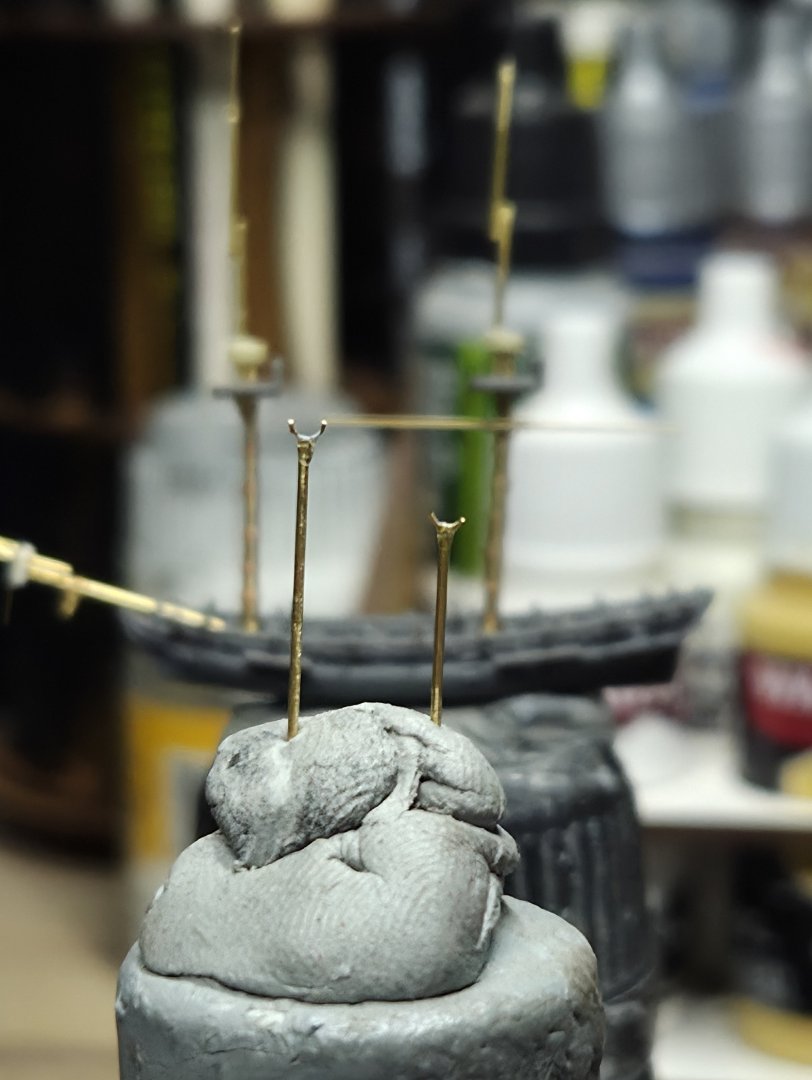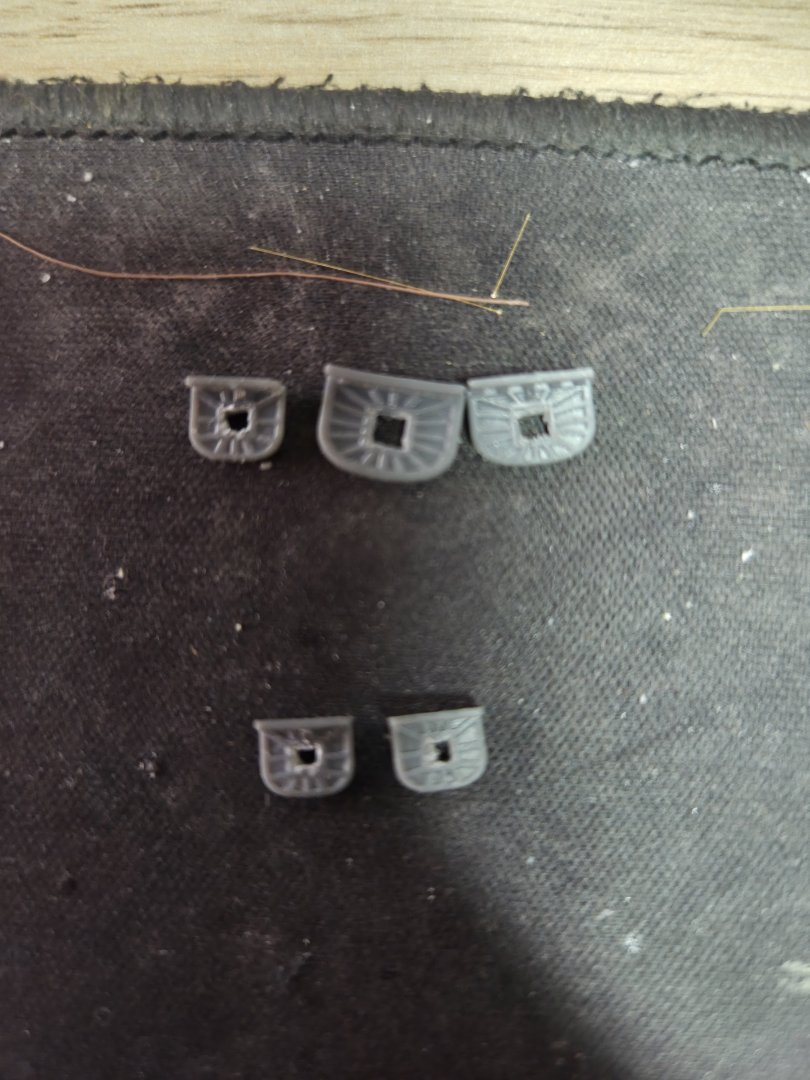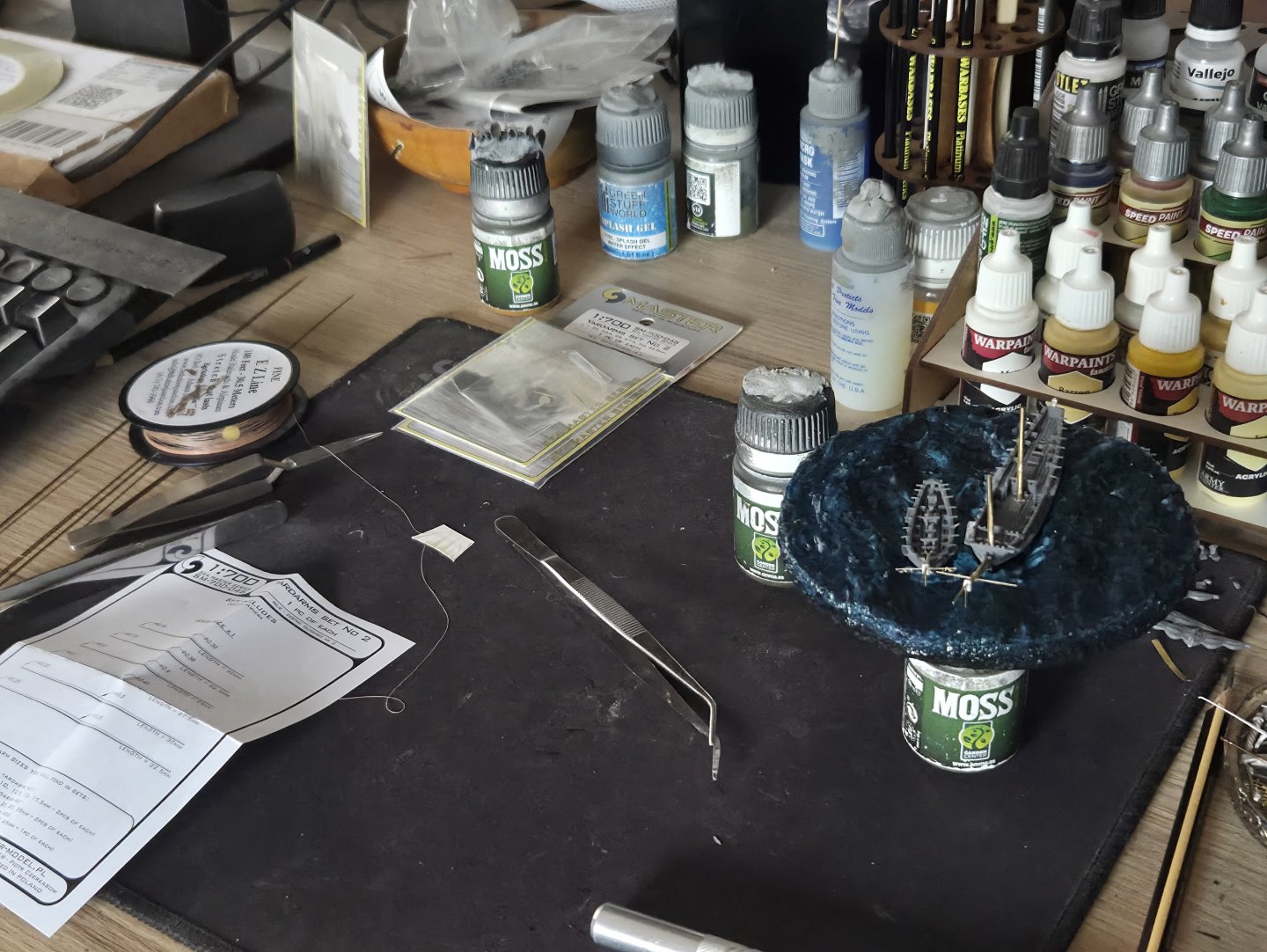-
Posts
28 -
Joined
-
Last visited
-
 NW Ship Builder reacted to a post in a topic:
HMS Speedy and El Gamo by Linus Spjutsberg - FINISHED - 1/700 scale - diorama - 3D printed
NW Ship Builder reacted to a post in a topic:
HMS Speedy and El Gamo by Linus Spjutsberg - FINISHED - 1/700 scale - diorama - 3D printed
-
 Nightdive reacted to a post in a topic:
A bit of research into navy warship paint 1775-1815
Nightdive reacted to a post in a topic:
A bit of research into navy warship paint 1775-1815
-
 Kauz reacted to a post in a topic:
HMS Speedy and El Gamo by Linus Spjutsberg - FINISHED - 1/700 scale - diorama - 3D printed
Kauz reacted to a post in a topic:
HMS Speedy and El Gamo by Linus Spjutsberg - FINISHED - 1/700 scale - diorama - 3D printed
-
 brunnels reacted to a post in a topic:
HMS Speedy and El Gamo by Linus Spjutsberg - FINISHED - 1/700 scale - diorama - 3D printed
brunnels reacted to a post in a topic:
HMS Speedy and El Gamo by Linus Spjutsberg - FINISHED - 1/700 scale - diorama - 3D printed
-
 Ronald-V reacted to a post in a topic:
HMS Speedy and El Gamo by Linus Spjutsberg - FINISHED - 1/700 scale - diorama - 3D printed
Ronald-V reacted to a post in a topic:
HMS Speedy and El Gamo by Linus Spjutsberg - FINISHED - 1/700 scale - diorama - 3D printed
-
 JacquesCousteau reacted to a post in a topic:
HMS Speedy and El Gamo by Linus Spjutsberg - FINISHED - 1/700 scale - diorama - 3D printed
JacquesCousteau reacted to a post in a topic:
HMS Speedy and El Gamo by Linus Spjutsberg - FINISHED - 1/700 scale - diorama - 3D printed
-
 Linus Spjutsberg reacted to a post in a topic:
HMS Speedy and El Gamo by Linus Spjutsberg - FINISHED - 1/700 scale - diorama - 3D printed
Linus Spjutsberg reacted to a post in a topic:
HMS Speedy and El Gamo by Linus Spjutsberg - FINISHED - 1/700 scale - diorama - 3D printed
-
 Linus Spjutsberg reacted to a post in a topic:
HMS Speedy and El Gamo by Linus Spjutsberg - FINISHED - 1/700 scale - diorama - 3D printed
Linus Spjutsberg reacted to a post in a topic:
HMS Speedy and El Gamo by Linus Spjutsberg - FINISHED - 1/700 scale - diorama - 3D printed
-
 Desertanimal reacted to a post in a topic:
HMS Speedy and El Gamo by Linus Spjutsberg - FINISHED - 1/700 scale - diorama - 3D printed
Desertanimal reacted to a post in a topic:
HMS Speedy and El Gamo by Linus Spjutsberg - FINISHED - 1/700 scale - diorama - 3D printed
-
 ccoyle reacted to a post in a topic:
HMS Speedy and El Gamo by Linus Spjutsberg - FINISHED - 1/700 scale - diorama - 3D printed
ccoyle reacted to a post in a topic:
HMS Speedy and El Gamo by Linus Spjutsberg - FINISHED - 1/700 scale - diorama - 3D printed
-
 yvesvidal reacted to a post in a topic:
HMS Speedy and El Gamo by Linus Spjutsberg - FINISHED - 1/700 scale - diorama - 3D printed
yvesvidal reacted to a post in a topic:
HMS Speedy and El Gamo by Linus Spjutsberg - FINISHED - 1/700 scale - diorama - 3D printed
-
 yvesvidal reacted to a post in a topic:
HMS Speedy and El Gamo by Linus Spjutsberg - FINISHED - 1/700 scale - diorama - 3D printed
yvesvidal reacted to a post in a topic:
HMS Speedy and El Gamo by Linus Spjutsberg - FINISHED - 1/700 scale - diorama - 3D printed
-
 Linus Spjutsberg reacted to a post in a topic:
HMS Speedy and El Gamo by Linus Spjutsberg - FINISHED - 1/700 scale - diorama - 3D printed
Linus Spjutsberg reacted to a post in a topic:
HMS Speedy and El Gamo by Linus Spjutsberg - FINISHED - 1/700 scale - diorama - 3D printed
-
 Linus Spjutsberg reacted to a post in a topic:
HMS Speedy and El Gamo by Linus Spjutsberg - FINISHED - 1/700 scale - diorama - 3D printed
Linus Spjutsberg reacted to a post in a topic:
HMS Speedy and El Gamo by Linus Spjutsberg - FINISHED - 1/700 scale - diorama - 3D printed
-
I finished this one today. I will post final pictures later as I am using them for other things. So these first are form the rigging of the models. Then I fished up the base, first testing that my wiring worked. Then it was time to test mount and finally finish it up. I also did a photo shoot for another project, I used my tv screen as a backdrop. It was really a lot of work, not like one of the large wood models for sure, but I did spend basically my whole summer on this, hours and hours, the running rigging from the 0.01 mm brass was madness. But I hope you all will agree that it turned out ok in the end.
-
 Linus Spjutsberg reacted to a post in a topic:
A bit of research into navy warship paint 1775-1815
Linus Spjutsberg reacted to a post in a topic:
A bit of research into navy warship paint 1775-1815
-
Started working on sails, I was first using normal copying paper... I have used that to good effect on wargaming minis. But this is a diorama so I needed to get something better. Got a tip about Silkspan. Did that and looked ok. Might go back to it, but then by chance I found some papyrus on a second hand shop. Decided to give it a try and I really like the result so far. Decision has not been made fully yet though. Took inspiration from HMS Victory surviving topsail, for the battle damage. I also started crewing the HMS Speedy. The situation in my diorama does not follow history exactly as HMS Speedy boarded El Gamo on her starboard stern quarter. But for the dynamics of my diorama I have her more on El Gamos starboard fore quarter, I am thinking maybe after her first repelled attempt. I need to fit this entire diorama in a small glass so I decided to do it this way. there will be a few glimmer led with El Gamos guns firing over HMS Speedys deck, offcourse also smoke effects, made from wadding. This is the situation right now, HMS Speedy ready for rigging and sails, I think. El Gamo has received some small damage to her starboard side using mainly paints. She is now ready to receive some 200 tiny little photoetch crew. I will not give her her full complement of crew in this form as I suspect it might look to busy. For El Gamo there’s no direct dockyard log confirming El Gamo was in Marseille, but Antoine Roux’s painting of “El Gambo” is signed and dated Marseille 1799, and Roux was known for painting ships he saw firsthand in port. Since El Gamo operated in the western Mediterranean, it’s very plausible she put into Marseille for supplies or repairs. While Spanish and French port records from that year are incomplete or not digitized, the details in Roux’s work, rigging, hull shape, and especially the light mid-hull stripe, strongly suggest he painted her from life. So even without official logs, Roux’s painting remains a credible visual reference for how El Gamo likely looked around the time of her encounter with Speedy. As for Spanish dockyard sources on paintwork, the surviving records from Cartagena and Ferrol do mention hull treatments, usually focusing on practical varnishing, pitch, or dark-stained wood rather than bold colors. There is limited evidence of decorative painting outside flagship-level vessels. What little survives supports the use of natural wood tones, with occasional lighter “wainscot” bands like the one seen in Roux’s painting. So while there’s no exact entry for El Gamo, the paint scheme Roux shows aligns with known Spanish practices of the time hopefully making it a solid basis for a historically grounded model.
-
 Linus Spjutsberg reacted to a post in a topic:
HMS Perseus by Thukydides - 1:64 - POB - Sphinx Class 6th Rate
Linus Spjutsberg reacted to a post in a topic:
HMS Perseus by Thukydides - 1:64 - POB - Sphinx Class 6th Rate
-
 Linus Spjutsberg reacted to a post in a topic:
HMS Portland 1770 by scrubbyj427 - 1:48 - 4th rate 50-gun ship
Linus Spjutsberg reacted to a post in a topic:
HMS Portland 1770 by scrubbyj427 - 1:48 - 4th rate 50-gun ship
-
First of all I posted this in the wrong category at first I think. I can't remove it for some reason though. Maybe a mod can help with that? Its in the paint section. I have just released a new deep-dive video on how warships were probably painted during the Napoleonic Wars, including a possible history behind the famous Nelson chequer. The research includes firsthand accounts, dockyard notes and letters, official restoration reports, historic naval art, and examples from surviving models. It covers the main fleets of the period (British, French, Spanish, American), and includes color swatches, visual comparisons, and what modern restorations like HMS Victory tell us about 1800s paintwork. I made this primarily for 1/700 scale wargaming. But I am sure some of the findings should be useful to ship modelers, wargamers, reenactors, and anyone interested in Napoleonic naval history. Watch here:
-
I have just released a new deep-dive video on how warships were probably painted during the Napoleonic Wars, including a possible history behind the famous Nelson chequer. The research includes firsthand accounts, dockyard notes and letters, official restoration reports, historic naval art, and examples from surviving models. It covers the main fleets of the period (British, French, Spanish, American), and includes color swatches, visual comparisons, and what modern restorations like HMS Victory tell us about 1800s paintwork. I made this primarily for 1/700 scale wargaming. But I am sure some of the findings should be useful to ship modelers, wargamers, reenactors, and anyone interested in Napoleonic naval history. Watch here:
-
 Linus Spjutsberg reacted to a post in a topic:
HMS Speedy and El Gamo by Linus Spjutsberg - FINISHED - 1/700 scale - diorama - 3D printed
Linus Spjutsberg reacted to a post in a topic:
HMS Speedy and El Gamo by Linus Spjutsberg - FINISHED - 1/700 scale - diorama - 3D printed
-
I was not happy with the water, so I decided to redo the whole base plate. New version is a resin mold I made. Much happier with this look. I hope you agree, if you check previous post with my old baseplate. I also added spars to the masts. Finally I began painting HMS Speedy as she might have appeared in her disguise as a Danish ship. I also did some more work on the base with cannon fire missing speedy and splashing in the water.
-
I have tried working on some furled sails using UV reactive putty to sculpt details . I worked on details for the masts of both ships also adding foot ropes. I was also unhappy with the water sp redid that. It's now better but needs more work. First picture is before, second updated colors and third as it stands now.
-
Short update. I am still working on HMS Speedys's masts. Added half rings to the the gaff and boom, my eyesight is bad enough that I can see this without magnification. Still I want this one to have as much detail as I can. I also made some cross trees. The smallest brass is just 0.1 mm here. And added the yards to. Next will be the foot ropes.
-
Happy you find it interesting. As for crew, that's what I usually do for ships I spend more time on. (see attached) For game pieces though, I have found you don't notice much. It only really shows if you are taking pictures for a battle report or a video. Check out my channel in the link (the first post) as I do many of those. Still these are my most detailed yet and for a diorama, so there will definitely be crew on them, and lots of them for El Gamo.
-
 Linus Spjutsberg reacted to a post in a topic:
HM Brig-Sloop Speedy by Stuka - Vanguard Models - 1:64
Linus Spjutsberg reacted to a post in a topic:
HM Brig-Sloop Speedy by Stuka - Vanguard Models - 1:64
-
Linus Spjutsberg changed their profile photo
-
Hi all, I’m starting a new 1/700 scale diorama project based on the famous encounter between HMS Speedy and the Spanish xebec-frigate El Gamo, and I’ll be documenting the build here as it progresses. Both hulls are 3D printed, but I’ll be making several modifications along the way — using photo-etch parts, scratch-built details, and entirely custom brass masts for strength and realism at this scale. The diorama is intended to capture the dramatic moment just before the boarding, with El Gamo’s heavy shot passing over the deck of HMS Speedy, a detail mentioned in firsthand accounts that highlights the incredible difference in size between the two ships. HMS Speedy (launched 1782) was a small 14-gun brig under the command of Thomas Cochrane. In July 1801, she engaged and captured the much larger El Gamo (built circa 1795), a 32-gun xebec-frigate of the Spanish Navy. The odds were stacked against her, but through deception, maneuvering, and a well-timed boarding, Cochrane pulled off one of the most audacious single-ship victories of the Napoleonic Wars. Paint Scheme & References I’m basing El Gamo’s appearance on a painting by Antoine Roux titled "El Gambo" — most likely a misspelling, but the ship depicted is a xebec-frigate and matches the general rig and form closely enough for adaptation. Speedy will be shown in disguise, painted as a Danish merchantman with a warm grey hull and a thin buff streak. However, her British colors will be visible, marking the moment just before she drops all pretenses and launches the assault. Build Notes This is still very much in the early stages. So far I have: Gotten both hulls printed in resin, they are designed by Turner Miniatures Begun fitting photo-etch deck details Started work on brass masts and spars Planned rigging layout and sail plan based on period sources Right now I am palnning out the layout of El Gamo. Since most of the hard planning, source work and decisions are done, and the fact that I am on hollidays I suspect that the rest will go fairly quick. Photos of the current stage are attached below. I'm very open to feedback, and would love to hear from others working at this scale or anyone who's tackled a similar diorama setup. Thanks for looking and more to come! Linus Spjutsberg I will be making a video on the build and upload it to my channel when done. There will be more.on the earlier stages there. I figured since I did not start this log at the beginning, I would post my current progress only. Please take a look at the channel if you would like: https://youtube.com/@linusnapoleonicshipyard?si=GqJ1XjEXdi8wnM2X
-
NW Ship Builder started following Linus Spjutsberg
-
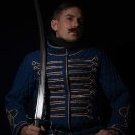
Linus Napoleonic shipyard
Linus Spjutsberg replied to Linus Spjutsberg's topic in New member Introductions
Yes at 1/700 scale space for maneuvering is a premium. We have sloved it, by moveing everything 50-70 cm away from the edge if we get to close. It works, but breaks the immersion a bit. -

Linus Napoleonic shipyard
Linus Spjutsberg replied to Linus Spjutsberg's topic in New member Introductions
Another one done. A brigs at this scale is tiny. HMS Curieux was a former French brig captured by the Royal Navy in a daring cutting-out raid at Fort Royal, Martinique in 1804. Renamed HMS Curieux, she served as a fast and agile brig in the Caribbean. One of her most notable moments came in February 1805, when under Lieutenant George Bettesworth, she fought a fierce single-ship action against the larger French brig Dame Ernouf. After a brutal 40-minute battle, Curieux forced her opponent to surrender, despite suffering heavy casualties. She continued her successful career capturing enemy vessels until she was wrecked off Guadeloupe in 1809. I have used a 3d printed hull and fighting tops from Turner Miniatures, masts were scratch-built built from brass rods. Sails are from warlord games, but cut to fit the smaller than standard warlord sized masts.
About us
Modelshipworld - Advancing Ship Modeling through Research
SSL Secured
Your security is important for us so this Website is SSL-Secured
NRG Mailing Address
Nautical Research Guild
237 South Lincoln Street
Westmont IL, 60559-1917
Model Ship World ® and the MSW logo are Registered Trademarks, and belong to the Nautical Research Guild (United States Patent and Trademark Office: No. 6,929,264 & No. 6,929,274, registered Dec. 20, 2022)
Helpful Links
About the NRG
If you enjoy building ship models that are historically accurate as well as beautiful, then The Nautical Research Guild (NRG) is just right for you.
The Guild is a non-profit educational organization whose mission is to “Advance Ship Modeling Through Research”. We provide support to our members in their efforts to raise the quality of their model ships.
The Nautical Research Guild has published our world-renowned quarterly magazine, The Nautical Research Journal, since 1955. The pages of the Journal are full of articles by accomplished ship modelers who show you how they create those exquisite details on their models, and by maritime historians who show you the correct details to build. The Journal is available in both print and digital editions. Go to the NRG web site (www.thenrg.org) to download a complimentary digital copy of the Journal. The NRG also publishes plan sets, books and compilations of back issues of the Journal and the former Ships in Scale and Model Ship Builder magazines.


